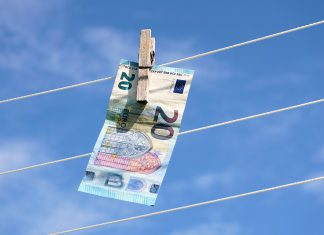A huge challenge for companies and consumers alike during the pandemic was the inability for business matters to be conducted in-person. As countries globally entered lockdowns, the possibility for wet signatures – a signature commonly done with pen and paper – become almost impossible.
A recent blogpost by e-sign and document security software provider MyDocSafe argued how the challenges posed by the pandemic led to a huge surge in the use of digital signatures, as organisations scrambled to find ways to maintain this important confirmatory function.
The definition of electronic signature can vary by jurisdiction, but they are commonly defined as requiring the signatory to be uniquely identified and linked to the signature as well as ensuring the signatory has sole control of the private key that was used to create the electronic signature. A qualified signature, however, requires an organisation to distribute the keys through a qualified provider and are historically required a piece of hardware to hold those keys.
MyDocSafe remarked that the ‘days of qualified signatures might be numbered’ due to the fact that advanced signatures armed with biometric authentication will provide ‘superior user experience and equivalent security’.
How the pandemic has changed the game
According to MyDocSafe, the pandemic represented an unprecedented ‘forcing function’ when it came to digital signatures – as the acceleration of digital transformation was clear in many previously analog processes, as digital signatures soared with wet signatures becoming unworkable due to the pandemic.
The challenges posed by being unable to conduct wet signatures did not go unnoticed by governments. The blogpost details how the US expedited the modernisation of legislation around digital signatures during the pandemic, with the E-SIGN Modernization Act due to see a more ‘streamlined process’ for consumers receiving electronic documents in future.
In the UK, a ministerial statement by the government at the beginning of March last year supported the ‘Electronic Execution of Documents’ report that backed using electronic signatures to complete documents provided that there is an intention to authenticate and then any execution formalities are satisfied.
Before the pandemic hit, most virtual signatures followed the Mercury signing protocols that had been in use since 2008. The challenge here was clear – many of these signings were still reliant on the emailing, printing and wet ink signing of documents by signatories, with signed pages being rescanned for their return. In a time where not all people would have access to print and scan technology, the acceptance of trusted e-signing platforms rocketed.
Due to this unexpected but incredibly necessary gap-in-the-market, the digital signature industry boomed. MyDocSafe cited recent research that found the digital signature market – valued at $1.2bn in 2019 – was now projected to reach $3.97bn by 2024.
“When it comes to digital signatures, the genie is well and truly out of the bottle”, the company stated in the blogpost. A return to wet signatures seems unlikely, due to the fact that digital signatures are being found to benefit all parties involved due to the faster deal progression and more efficient workflows.
Regulation and best practices
While the digital signatures industry is going from strength to strength, MyDocSafe emphasised that as adoption of the technology spreads, the industry can expect regulation to tighten very soon.
The company also underlined that the pandemic has highlighted a need for more public awareness around the legality of digital signatures, as there were some digital signing procedures which struggled to become ‘pandemic proof’ – including the transfer of deeds, which still requires a witness to be physically present at the time of signing.
Despite this, there is even changes in this area. Legislation in the UK last year was changed surrounding wills and codicils due to lockdown difficulties, and now wills are able to be witnessed electronically through a video call.
For companies that looking to adopt digital signature protocols within their own business, MyDocSafe emphasised a few practices that it would recommend. These include working with a reliable and recognised platform – something that can help to guarantee a more trustworthy and dependable service.
Other practices recommended are educating clients on the legality and validity of the process, as well as automating permission flows to help when you are looking to collect a number of signatures that are interdependent upon a chain of authority. Top-level security practices and ease of inclusion are also recommended.
MyDocSafe concluded, “Even before the impact of Covid, digital signatures represented a real opportunity to improve customer experience and operational efficiency. The impact of the pandemic has only increased consumer expectations when it comes the ease and convenience of digital signing – and today it’s up to enterprises to up their game and meet these expectations.”
Find the full blogpost here.
Copyright © 2021 RegTech Analyst
Copyright © 2018 RegTech Analyst






